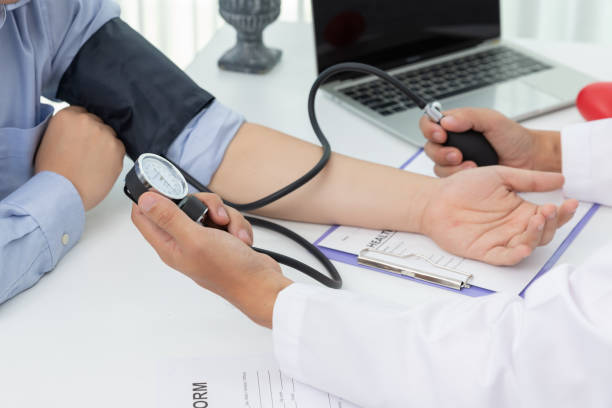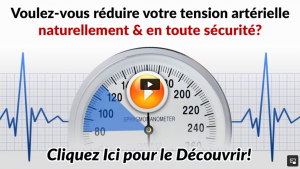2. Sever Headache
If you have very high blood pressure then this can lead to a severe and chronic headache. This is caused by numerous things. Specifically, the heart is now pumping hard and the body is tensed and stressed. This causes tension in the muscles around the face, head and neck and it means that the blood and oxygen supply to the brain may be impeded. These things together can result in significant pain and discomfort in the head which might come and go or might continue indefinitely. In the short term, try taking some aspirin for the headache. Not only is this an effective analgesic, but it is also a blood thinner meaning it can help to lower the blood pressure in the short term.
3. Short Breath
If you feel out of breath a lot of the time, especially during exercise, then this is another sign of high blood pressure. This is because the circulatory system is struggling to do its job properly: which is to provide you with the oxygen and nutrients that your body needs in order to operate. As these dwindle in supply, you can end up struggling with regular tasks and feeling out of breath when exerting yourself even slightly. Dreading those stairs? Then consider high blood pressure as a cause.
4. Anxiety
Anxiety is a common symptom associated with a number of different circulatory system problems. To understand this, it is important to recognize the close link between our physiology and our mood. Physiology describes things like our heartrate, our tension, our sleep-or-lack-thereof… all these things can leave us tense and irate which in turn increase arousal. And this then has the knock-on effect of sending more signals to the body and making you feel more highly stressed. When the heart rate goes up, so does cortisol, dopamine and adrenaline.
5. Chest Pain
High blood pressure effectively means that the heart needs to work harder in order to do the same work. And after all, the heart is a muscle! What do you notice after you have an intense workout at the gym? That’s right: muscle ache! Well, it’s the same thing here and that’s why chest pain is a common symptom of high blood pressure. This is also caused by a contracting of all the muscles, including the muscles between the ribs.
6. Irregular Heart Rate
An irregular heart rate is another symptom of high blood pressure. This is simply because the heart is not able to work properly to pump the blood and instead starts to sputter and start! This sounds a lot more frightening than it is – and keep in mind that the heart rate is never completely regular. Usually, it will fluctuate as we breath in and out. But when you are highly stressed and have high blood pressure, this irregularity becomes abnormal and you need to do something about it.
7. Coughing
Coughing is another symptom commonly associated with high blood pressure. This is because high blood pressure can lead to swelling and edema. That means that fluid is starting to build up on the lungs and you will constantly feel the need to clear your throat and empty out the lungs. Again, if you think of the stereotypical image of someone with high blood pressure, then you will tend to think of someone coughing and starting.
8. Risk Factors
When diagnosing any condition, it’s important not to think of the symptoms alone but also the context. In other words: what is most likely to be causing you discomfort based on your demographic?
While we shouldn’t generalize or give in to stereotypes, the truth is that certain things make you more likely or less likely to suffer with high blood pressure. Common triggers that make you more likely to have hypertension include: being male, certain ethnicities, drinking, smoking, being overweight, being stressed, having a history of blood pressure in the family, not getting much/any exercise. If these things describe you and you notice the symptoms listed here, you may need to give your physician a visit!9. Vision Changes
If you notice any disruption in your normal vision, speak to your doctor and arrange a blood pressure test. Hypertension symptoms can affect your sight as well. When blood pressure rises, it increases intra-ocular pressure at the back of the eyes, causing multiple vision symptoms including double vision, loss of vision in the periphery, as well as temporary blindness in one of the eyes.
Some people may confuse this symptom with low-blood sugar levels. However, if it starts to occur regularly, then it could be a sign of hypertension. Vision issues associated with hypertension are rarely permanent, and bouts of vision loss may only last for a few minutes, or up to a few hours.
Affected individuals may only notice these symptoms occur in the midday to afternoon, as blood pressure reaches its peak. As you rest overnight, blood pressure drops, and as a result, these symptoms rarely occur in the morning.
10. Nosebleed
Hypertension weakens the walls of blood vessels, and as a result, people who are suffering from high blood pressure may find that they experience frequent nosebleeds. Elevations in blood pressure expand the walls of blood vessels, thinning them out and weakening their structure. When affected individuals sneeze, the increase in intracranial pressure can rupture the blood vessel, causing a nosebleed.
These nosebleeds can be severe, and last for several minutes. Due to the compromised integrity of the blood vessel, the body may have trouble with clotting, causing the nosebleed to last for longer than expected. Nosebleeds may occur without you being aware they’ve started, and you may only notice a running sensation well after the bleeding begins.
If you’re experiencing headaches, accompanied by nosebleeds, it could be a warning sign that your blood pressure is at unsustainable levels. Seek immediate diagnosis and treatment from your doctor. It’s possible to reduce the frequency and intensity of these symptoms with the use of blood pressure medication.
11. Fluid in the Lungs
Pulmonary edema is the medical term that describes a pooling of fluid in the lungs. Also known as lung congestion, and lung water, pulmonary edema is a cause for serious concern in affected individuals.
When fluid fills the lungs, it makes it challenging to get the oxygen your body needs, resulting in shortness of breath and a feeling like you can’t catch you breathe. You may also notice feelings of pain when you try to breathe deeply.
Physicians treat pulmonary edema by draining fluid from the lungs and managing the situation with medication. Most patients require an overnight stay in the hospital for monitored care, as well as regular, follow-ups to ensure the condition does not reoccur.
Symptoms of pulmonary edema vary depending on the severity of the condition in the affected individual. Some of the more common signs of the pulmonary edema include wheezing and difficulty breathing when lying down.
12. Cerebral Edema
This condition describes a build-up of fluid on the brain. Cerebral edema is a life-threatening condition that can lead to seizures and the patient falling into a coma. The build-up of fluid on the brain increases intracranial pressure, reducing blood flow. As a result, the patient may find that they start to experience seizures as a result of a lack of oxygenated blood reaching the brain.
Hypertension can cause swelling in the brain that results in the start of cerebral edema. If the patient does not seek immediate treatment, they can end up experiencing a seizure that ends up in the death of the patient.
Some of the symptoms associated with cerebral edema include – dizzy spells, nausea, and headache. As the condition advances, the patient will start to notice a feeling of tingling and numbness in the hands, as well as a loss of coordination and the onset of confusion as the brain begins to shut down.
13. Aorta Tear
The aorta is the largest artery in the body and the center of the cardiovascular system. The aorta supplies blood to every major artery in the body, and people with hypertension run the risk of developing an embolism in this critical artery.
The heart has a double-pump action that transports oxygenated blood away from it through the aorta and draws in blood for every other region as well. The ascending aorta is the largest artery in the body, and if it experiences damage or a rupture in the lining of the artery wall, it could end in sudden death for the affected individual.
Hypertension increases the blood pressure inside the aorta, resulting in an embolism in the lining of the artery wall. Should this embolism rupture, a blood clot will cause sudden death through congestive heart failure. Unfortunately, there is no way to identify an issue with the aorta immediately, and symptoms are often confused with other disorders and disease.
14. Seizures
Hypertension, also known as, “the silent killer,” gains its moniker from the fact that the condition rarely presents noticeable symptoms. As a result, the affected individual may not even realize that their health is at risk. If high blood pressure remains undiagnosed and untreated, the condition can have a severely adverse effect on the cardiovascular and neurological system.
Pulmonary and cerebral edema can harm the brains electrical activity, causing changes in normal brain function. As a result, the brain may experience a seizure at some point. Seizures can vary in intensity and duration. However, people with high blood pressure that suffer a seizure typically notice a gradual increase in length and strength, and the majority of patients seek treatment after their first experience. However, should the patient refuse to seek treatment, symptoms will continue to increase in severity, and result in a seizure that could cause death, or leave them in a permanent vegetative state.










